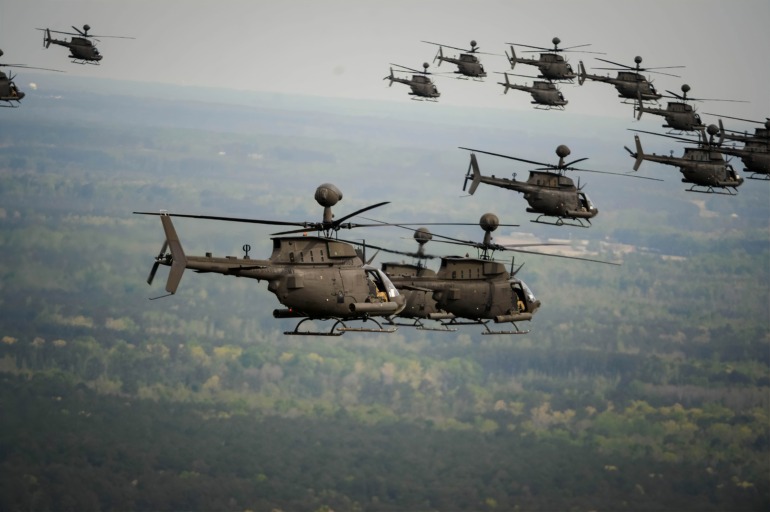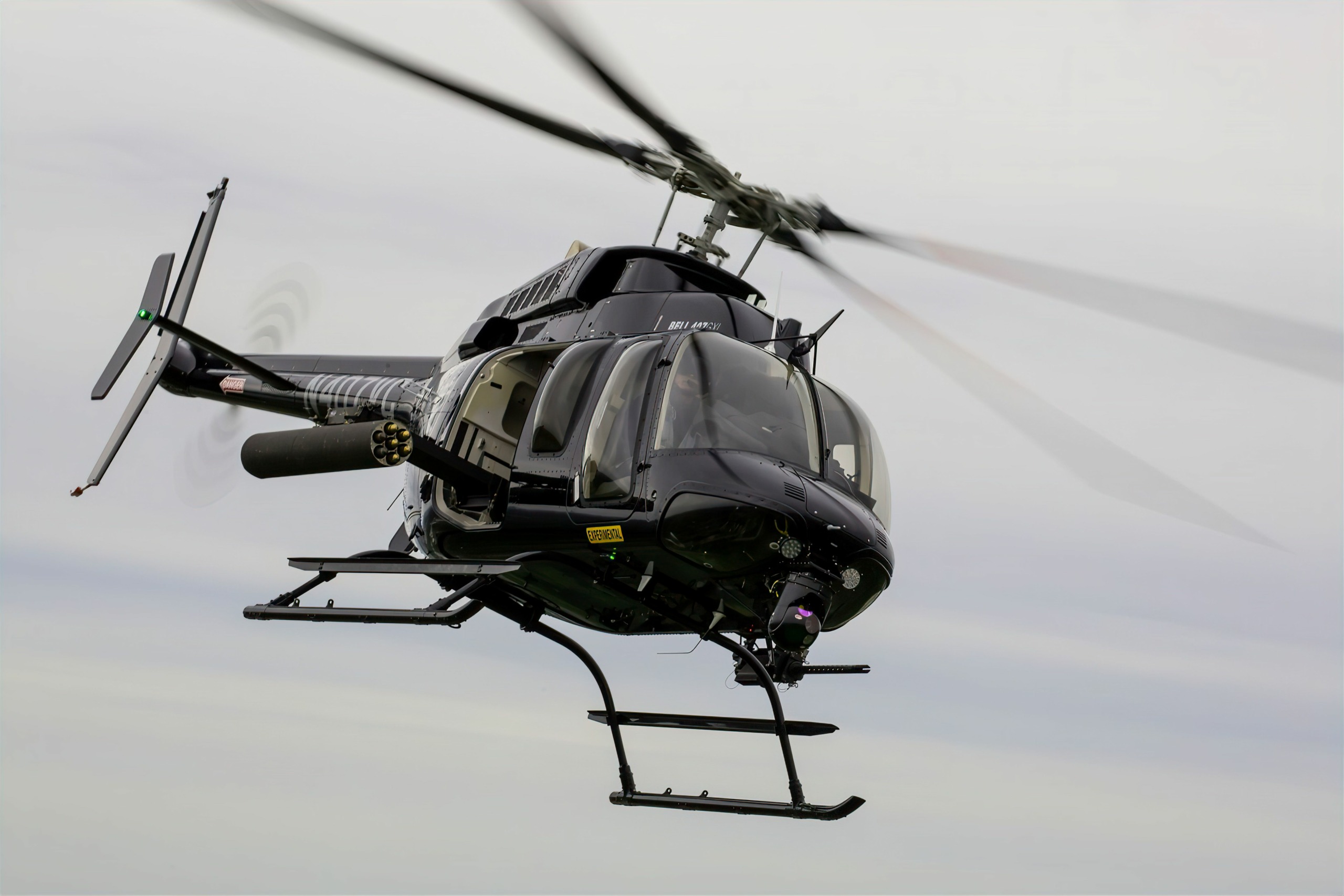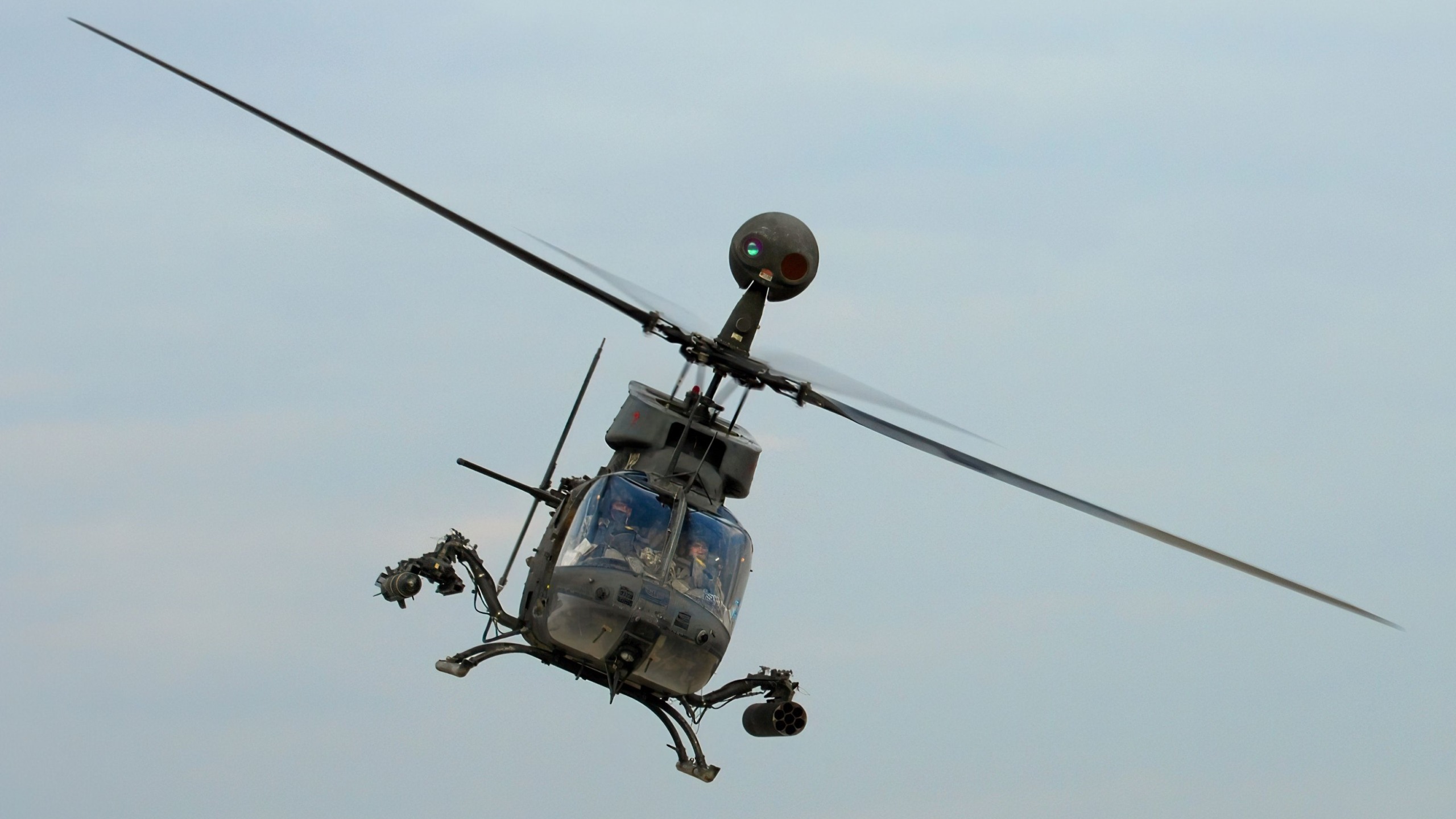On 15 April 2016, 32 Bell OH-58D Kiowa Warriors flew in formation from Fort Bragg, in the US, creating a Guinness World Record for the Largest Helicopter Formation Flight in history. The event was organized by 1st Squadron, 17th Cavalry Regiment, 82nd Combat Aviation Brigade of the US Army and marked part of the grand finale for the U.S. military fleet in a spectacular swansong for the platform and those who flew in them.
The Kiowa Warrior’s reputation as a capable and rugged aircraft started with the OH-58A, which launched in 1968. It underwent two rounds of modifications and upgrades until the world-record setting OH-58D flew in 1983, with its upgraded engine and transmission. The single engine, four-bladed armed reconnaissance helicopter was the first U.S. Army helicopter to have an all-glass cockpit and incorporate a Wire Strike Protection System (WSPS), designed to prevent wire and power line strikes due to its typically low-flying missions. The WSPS proved so successful, it was adapted to virtually every other helicopter in the U.S. fleet.
There were around 2,325 Kiowa Warriors produced up until the delivery of the final new-build platform to the U.S. Army in 1989, with the last of them being retired from active service in the US in 2020.
For Bell, and its customers, the Warrior’s lineage lives on, in the form of the Bell 407M – the first of a fleet of Bell’s Special Missions Aircraft that are based on its esteemed commercial platforms – but with even more multi-mission capabilities. Reconfigurable in just 30 minutes, the 407 is the world’s most cost-effective, multi-role helicopter, building on the proven features from the OH-58 and its 2-million flight hours with more than 750,000 being flown in combat. With capabilities that extend from public safety, HEMS and utility, to armed multirole including light attack, special ops, reconnaissance, command and control and anti-piracy, the Bell 407 is already well-established globally. In the 407’s commercial configuration it has achieved more than six million flight hours over its 1,100-strong fleet.
The ‘M’ series takes its impressive mission versatility even further, in addition to low sustainment costs, and readily available parts interchangeable with other Bell platforms, all of which combine to keep the platform in the air as much as possible – and quickly.
Such a distinguished pedigree means the Bell 407M and its other SMA counterparts are well placed to meet the needs of Bell customers across the globe, as this next generation of aircraft takes to the skies – no doubt with some more World Records on the horizon too.



